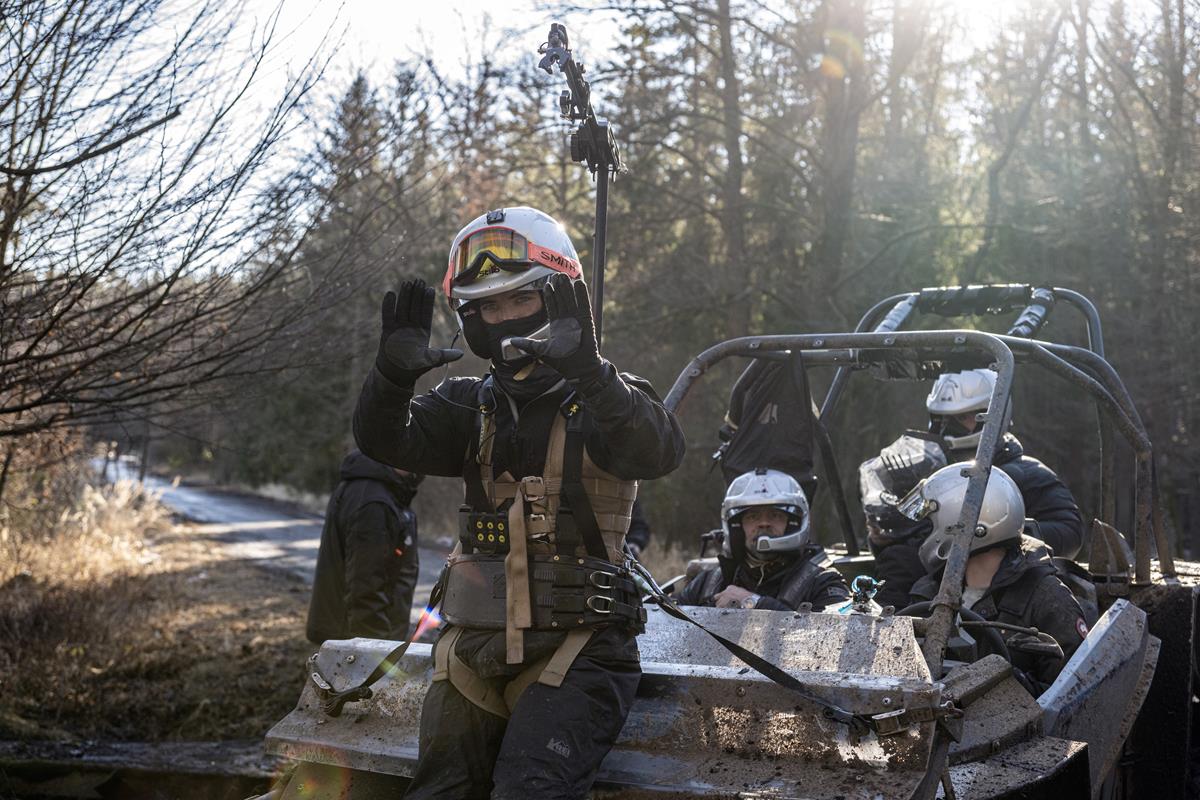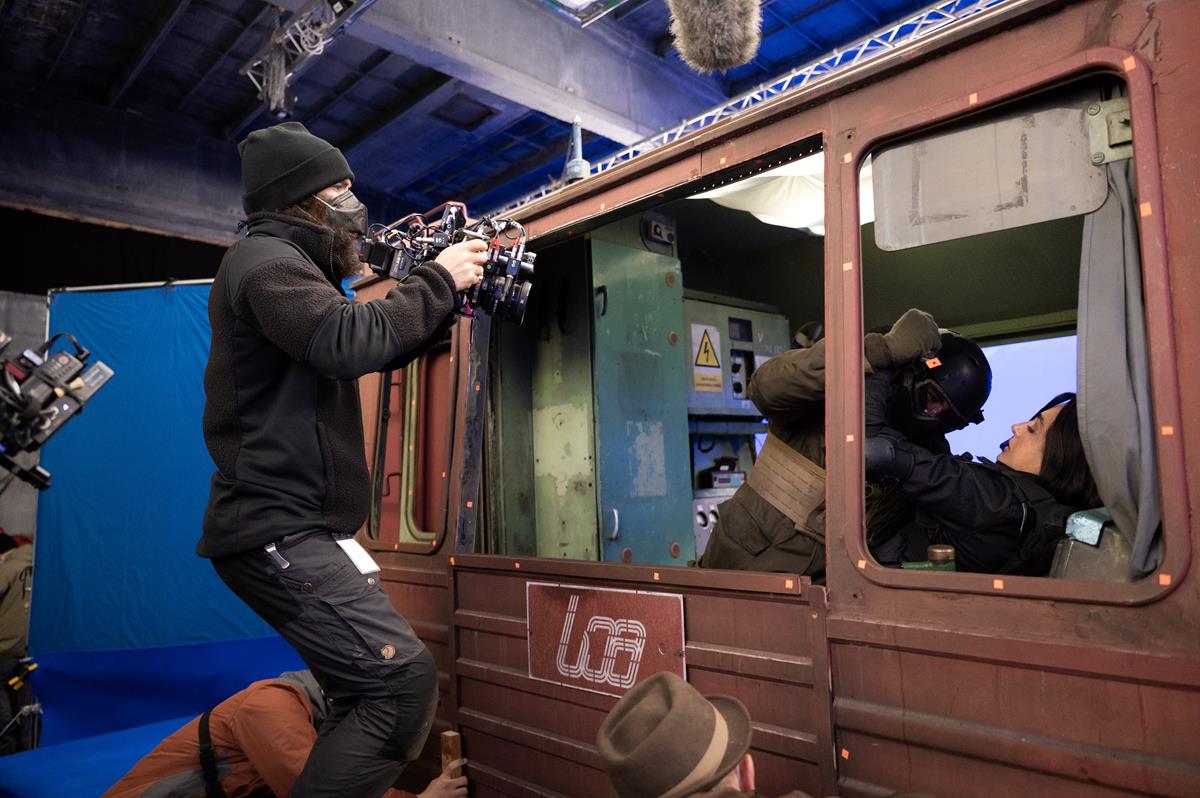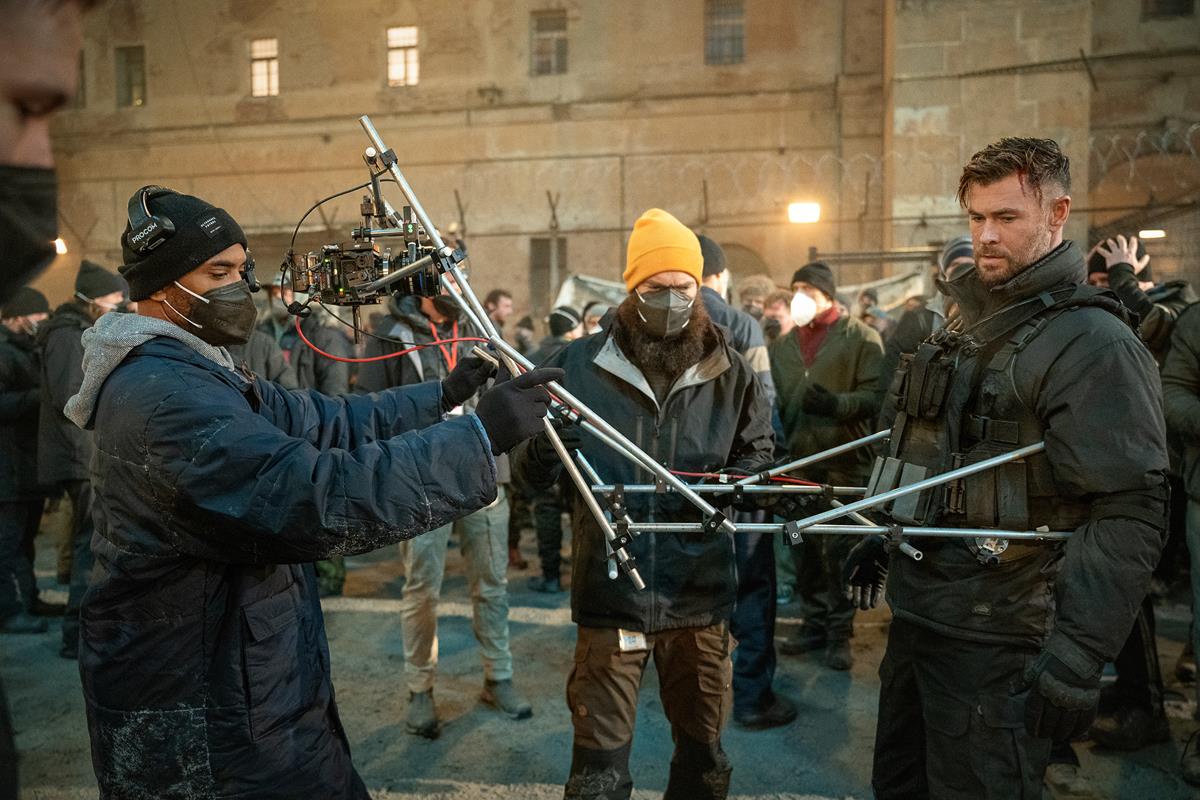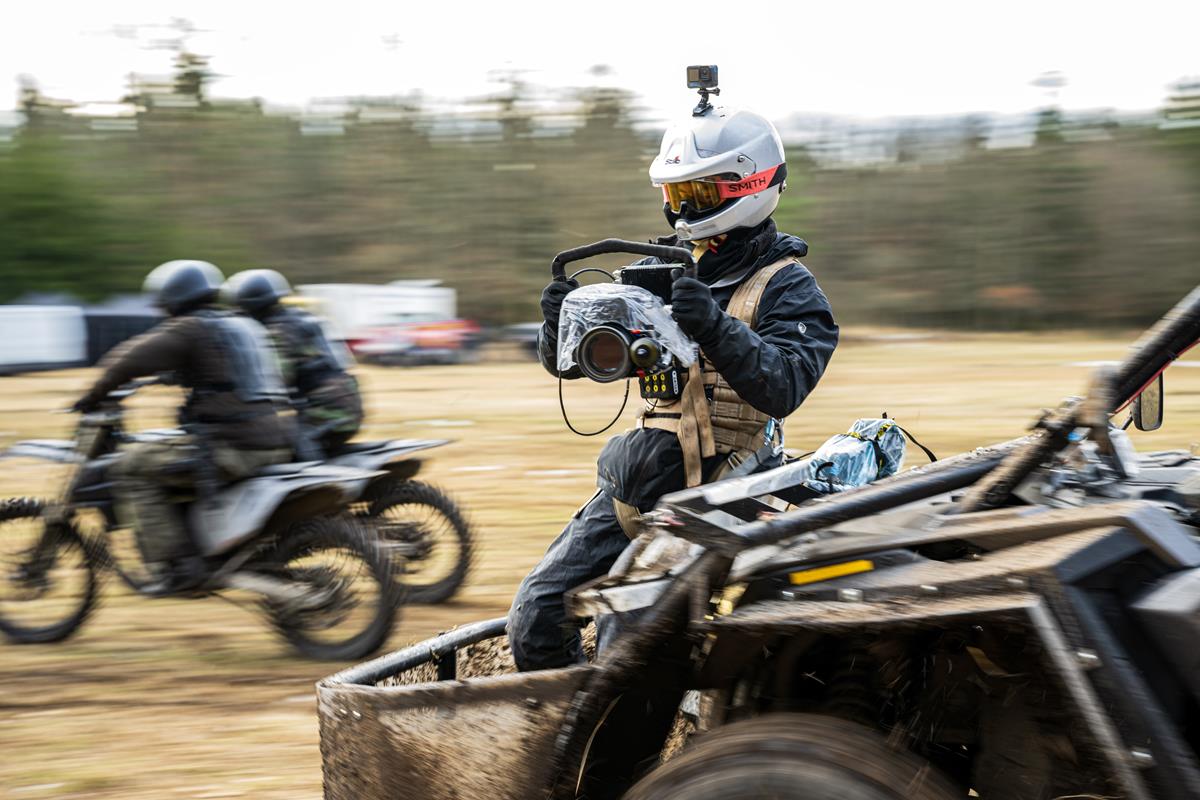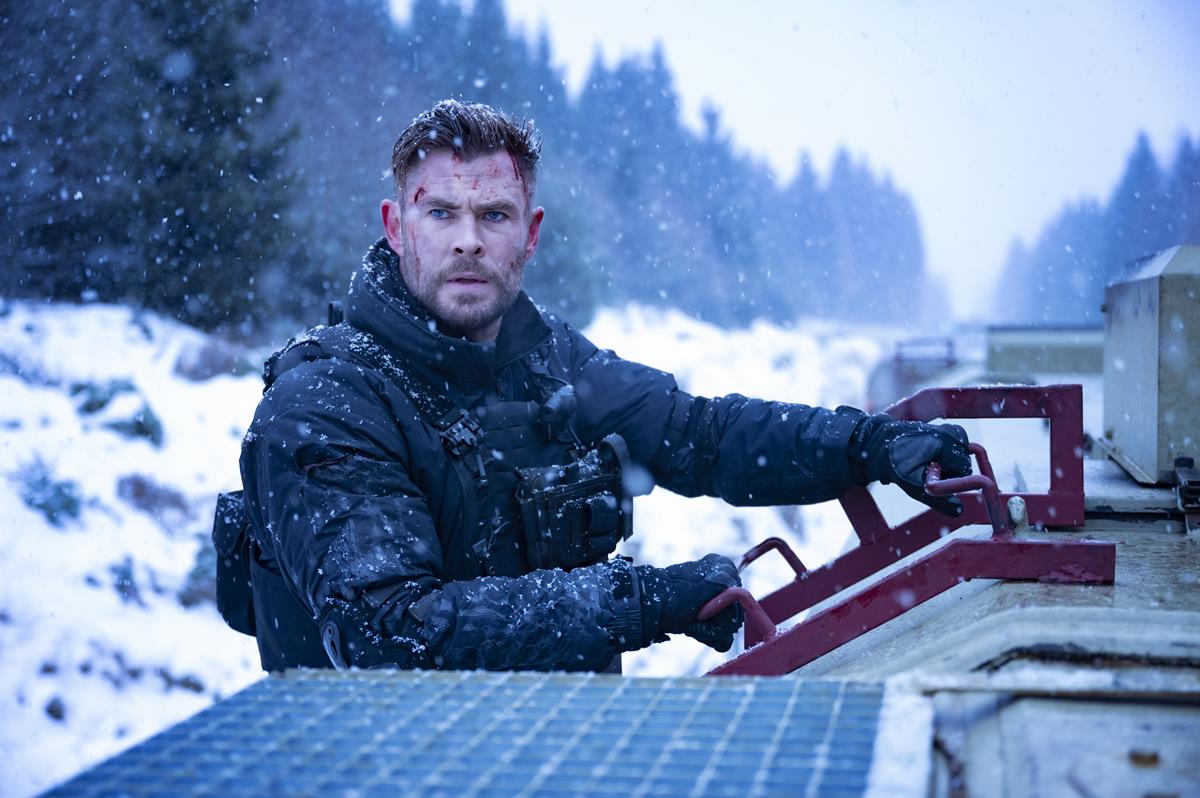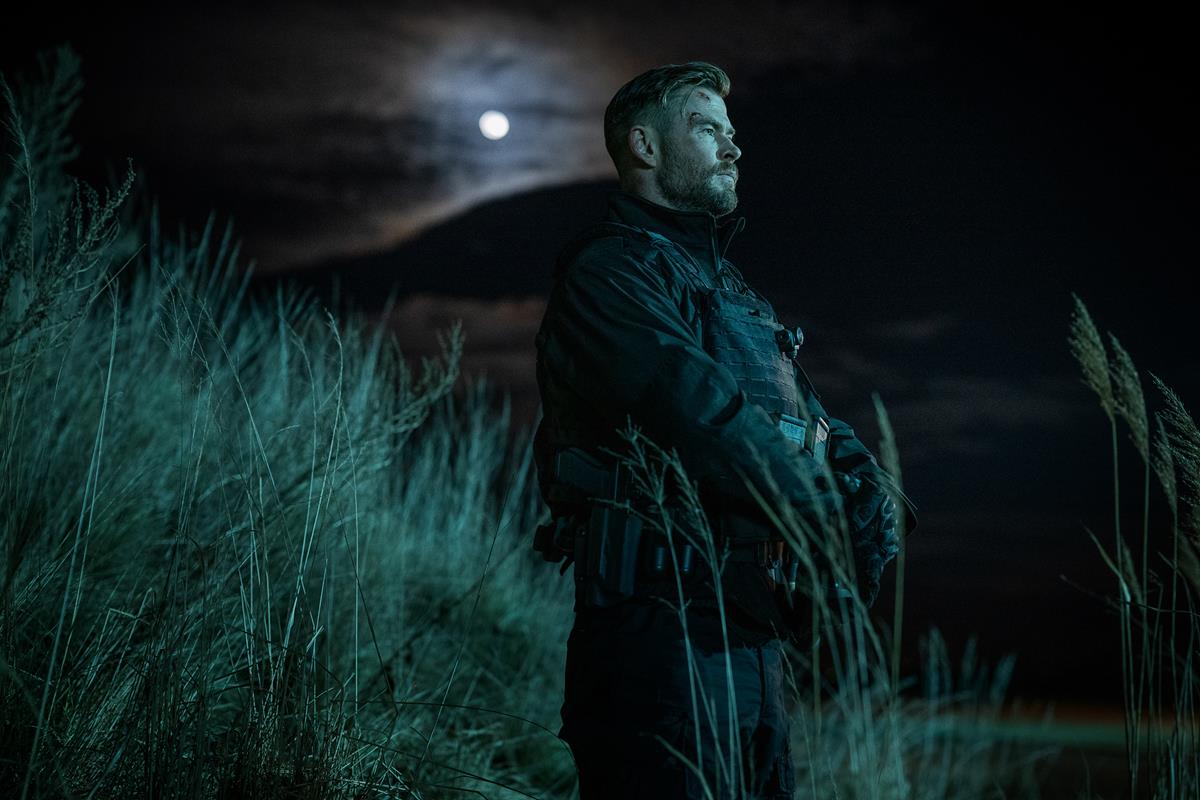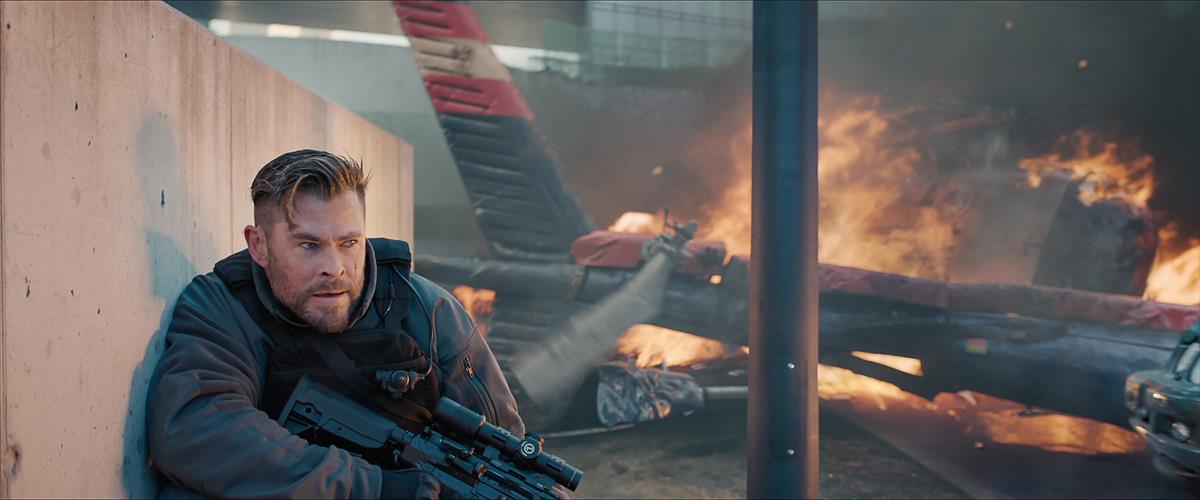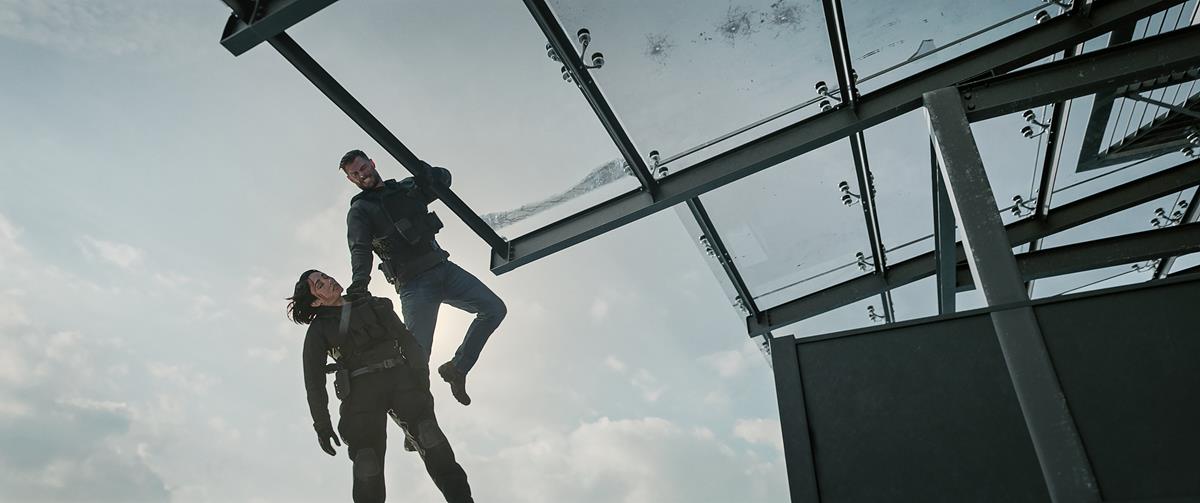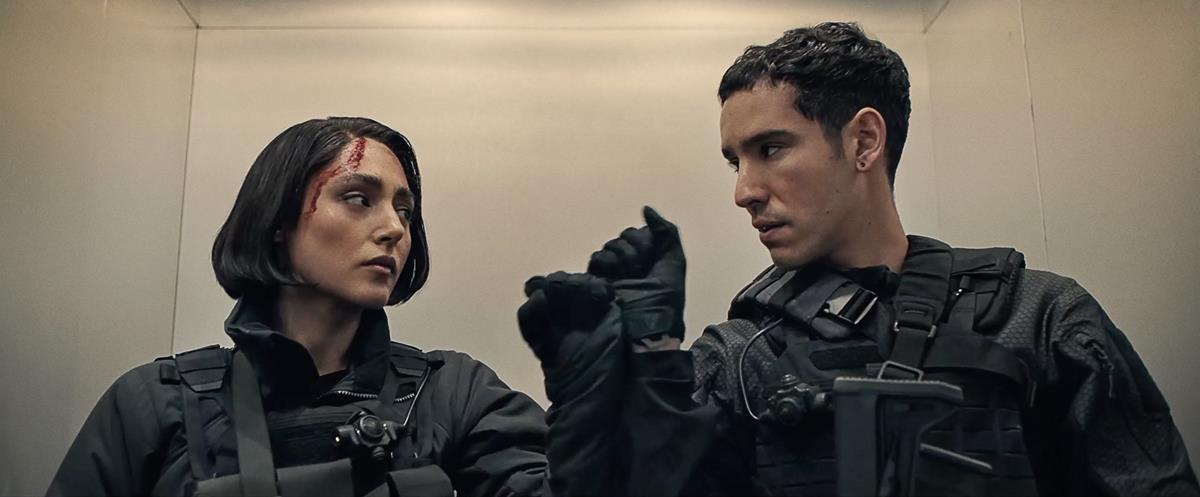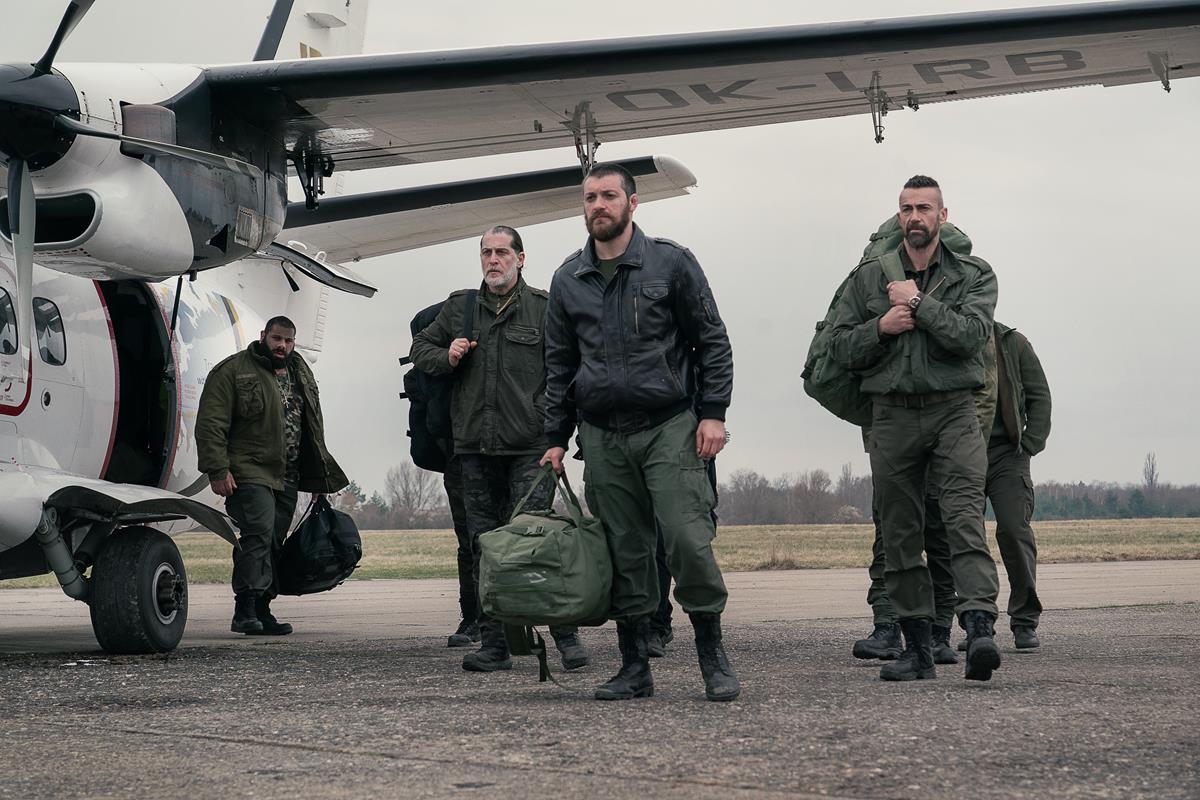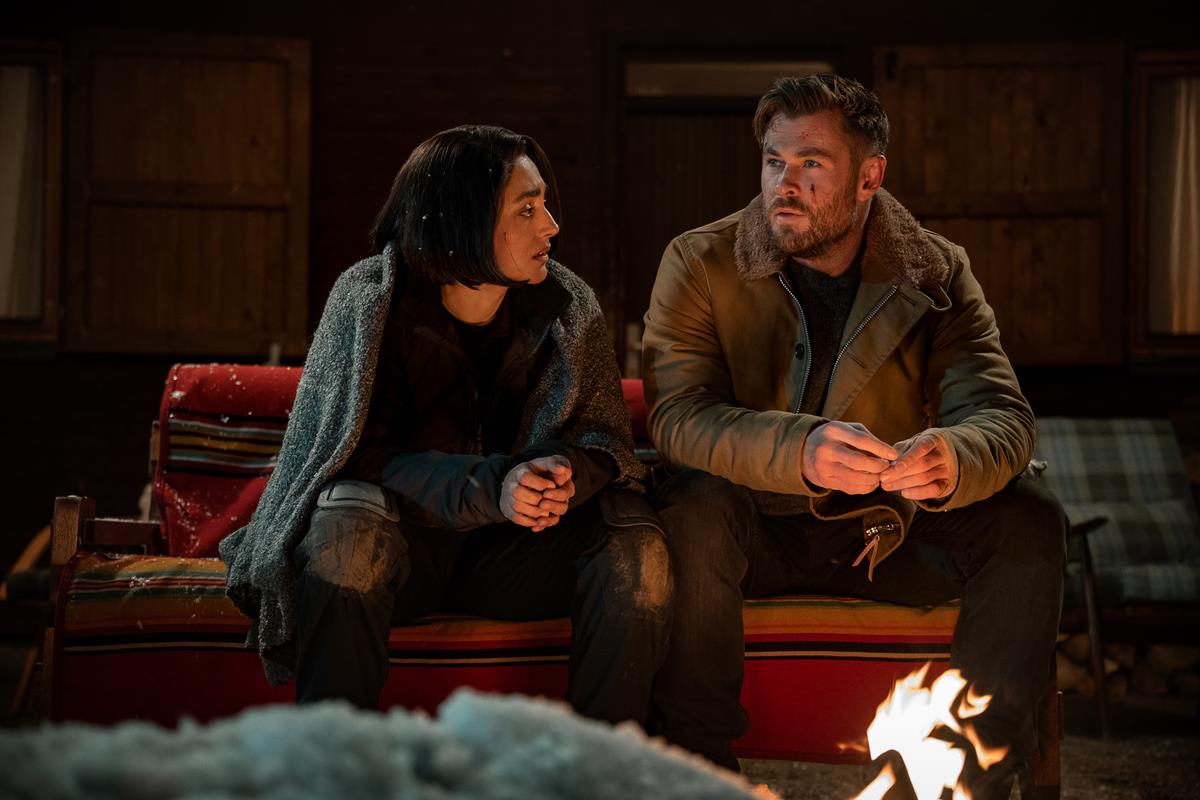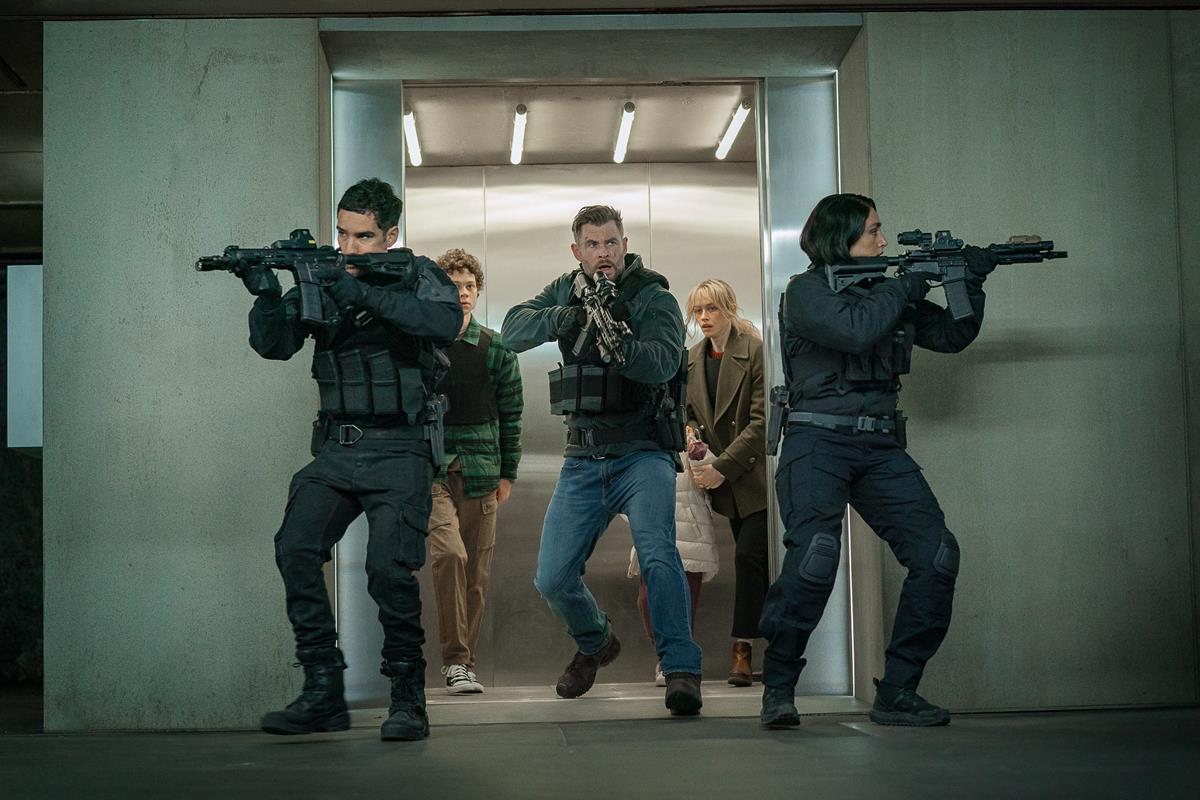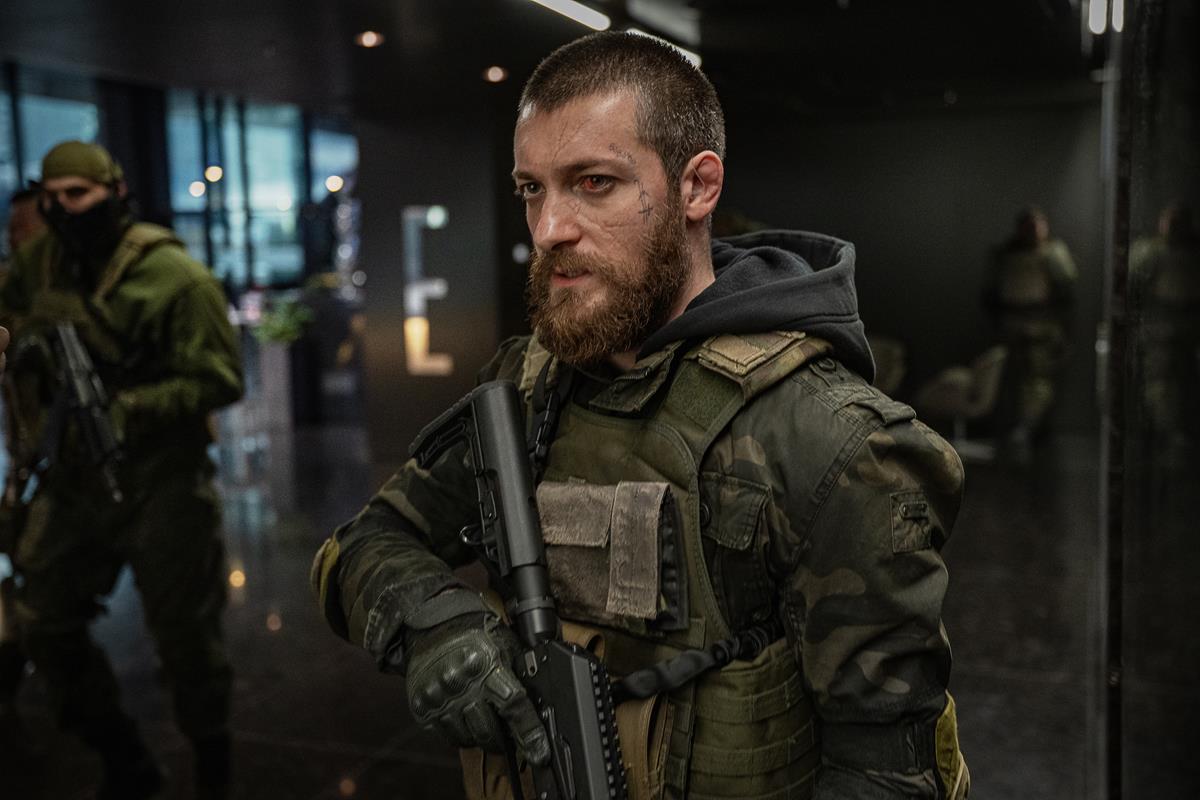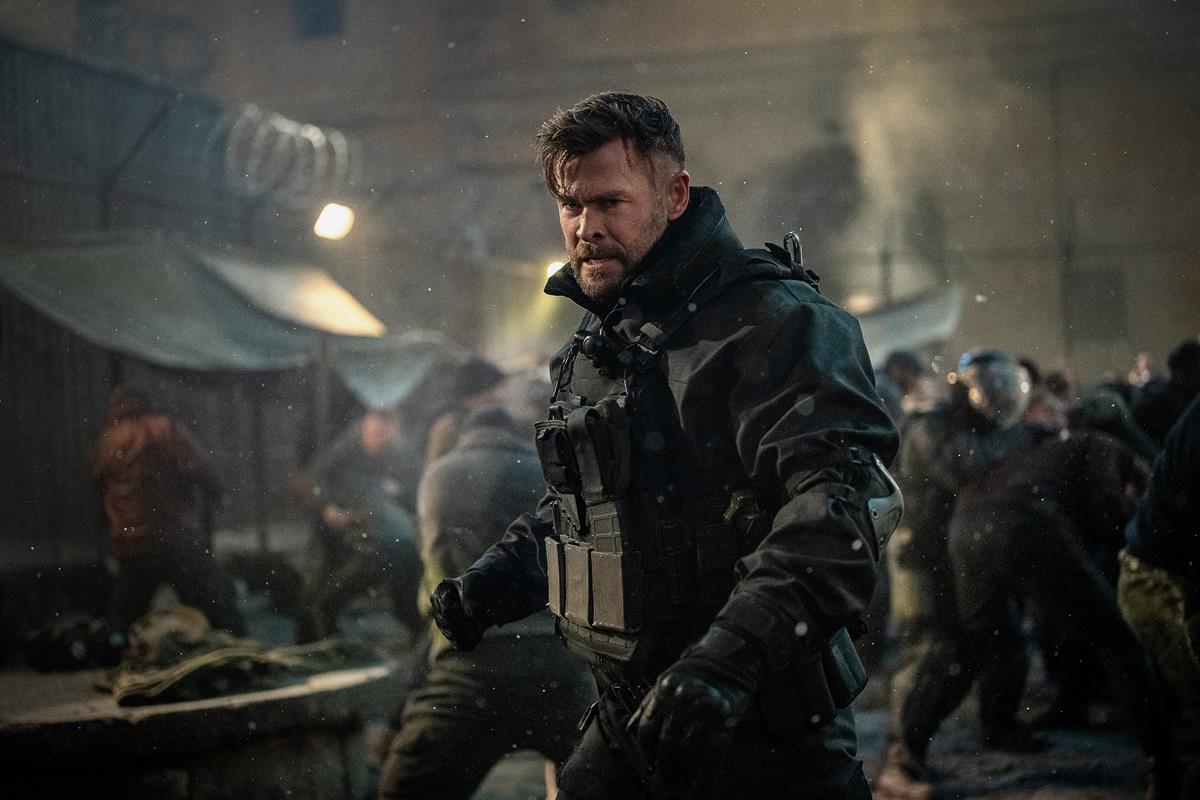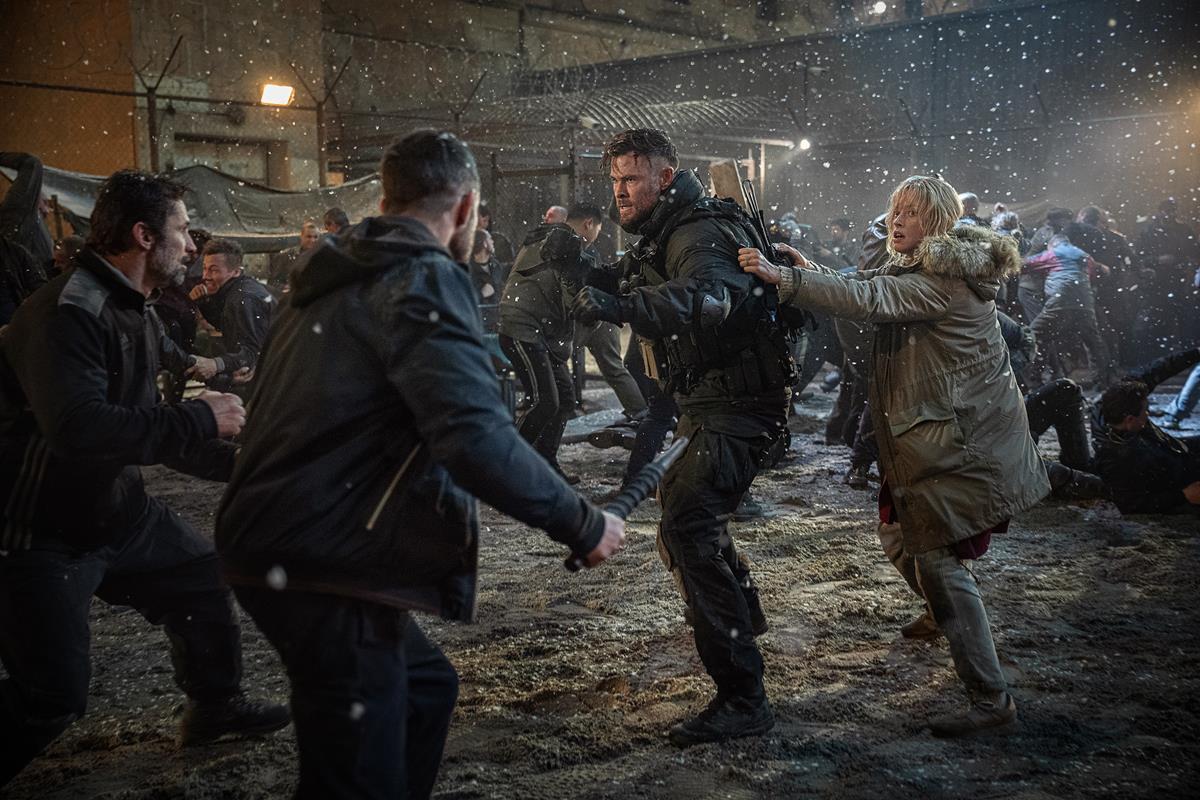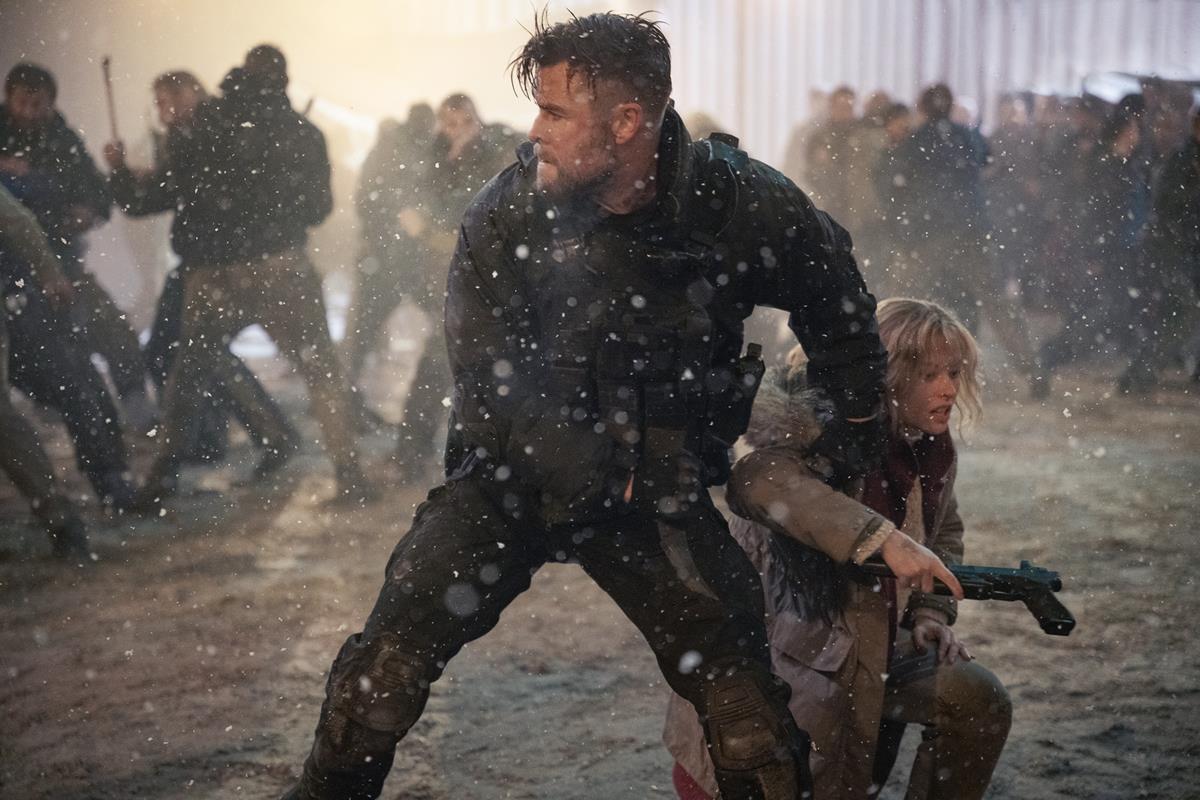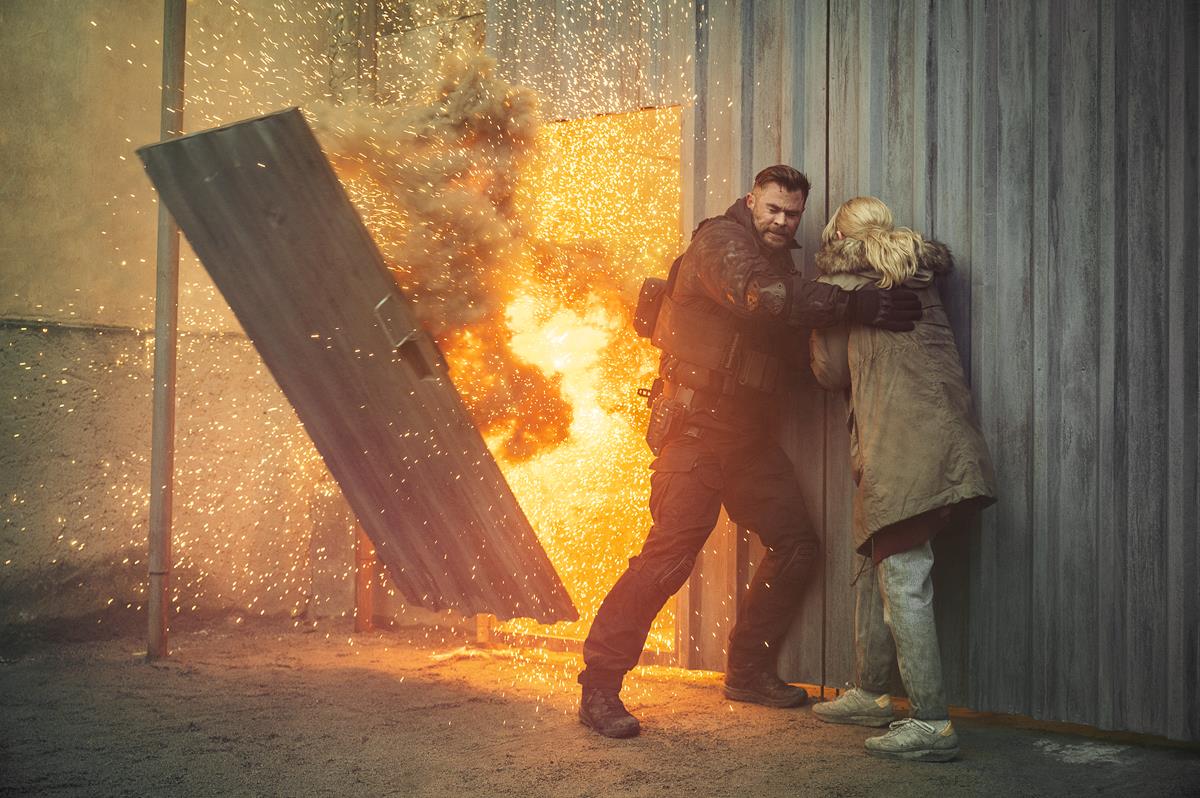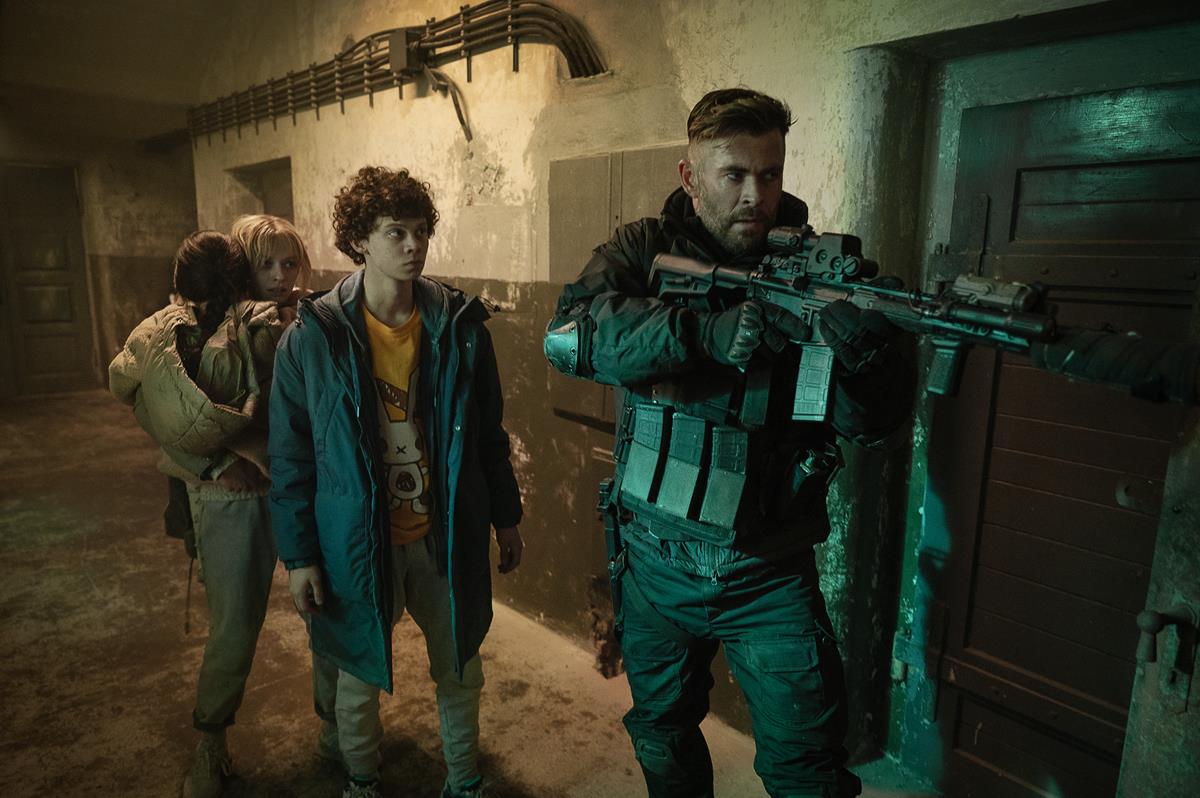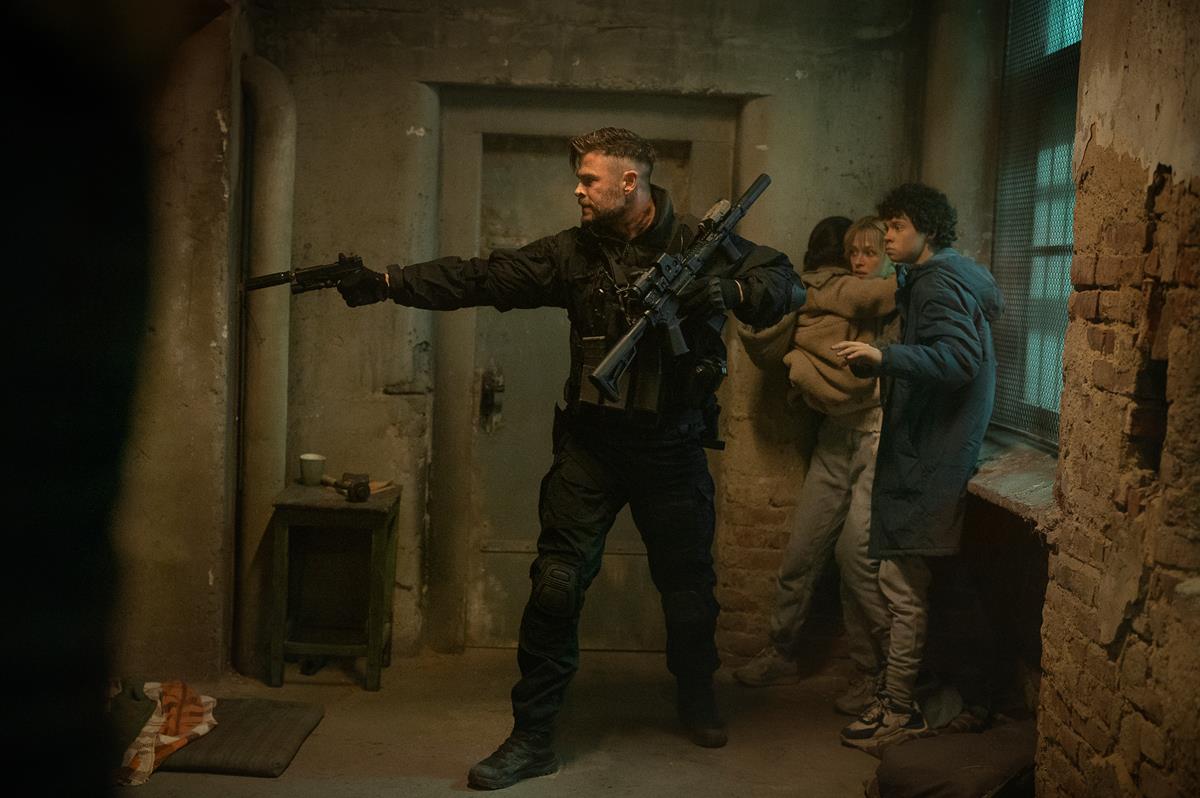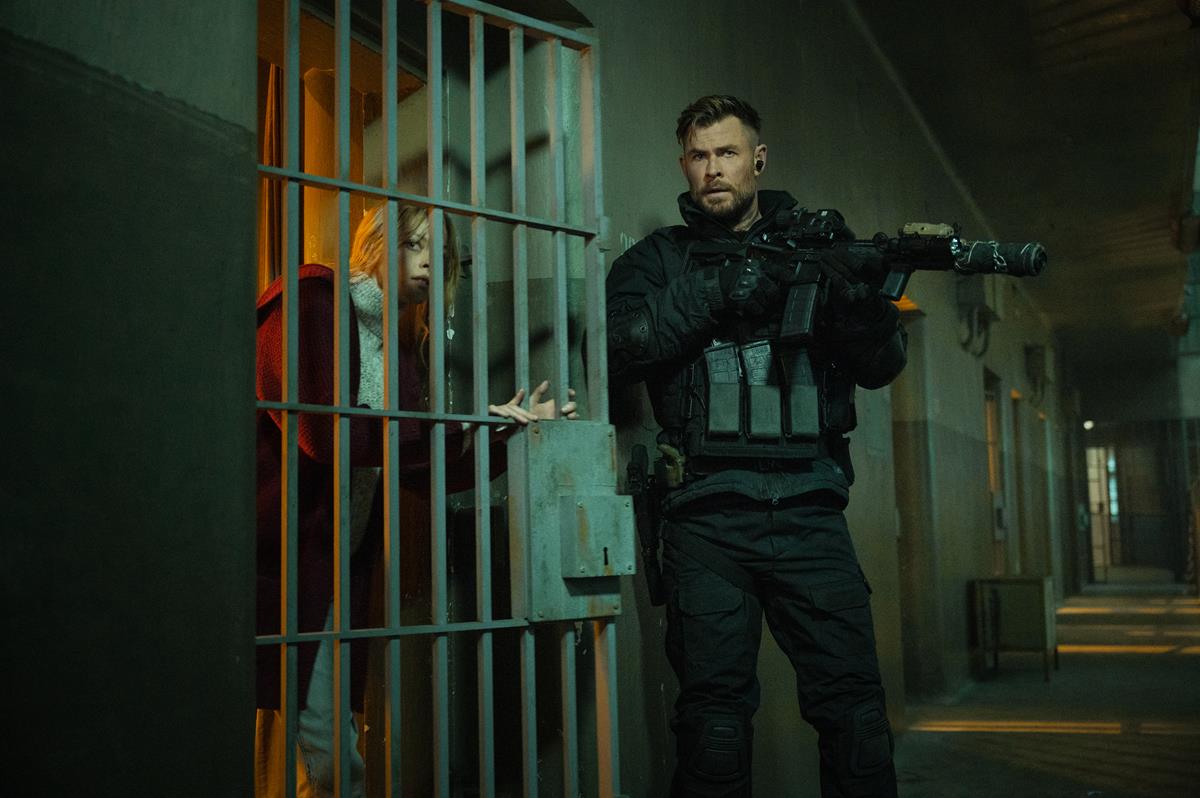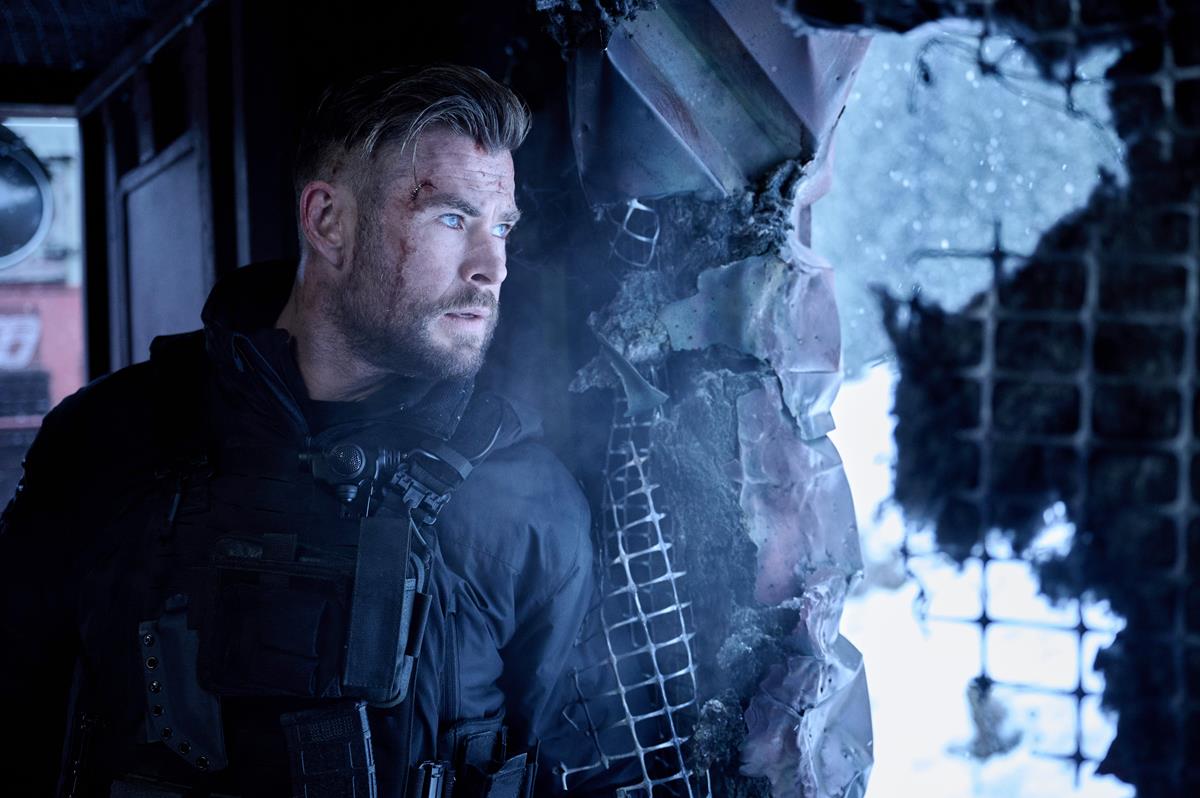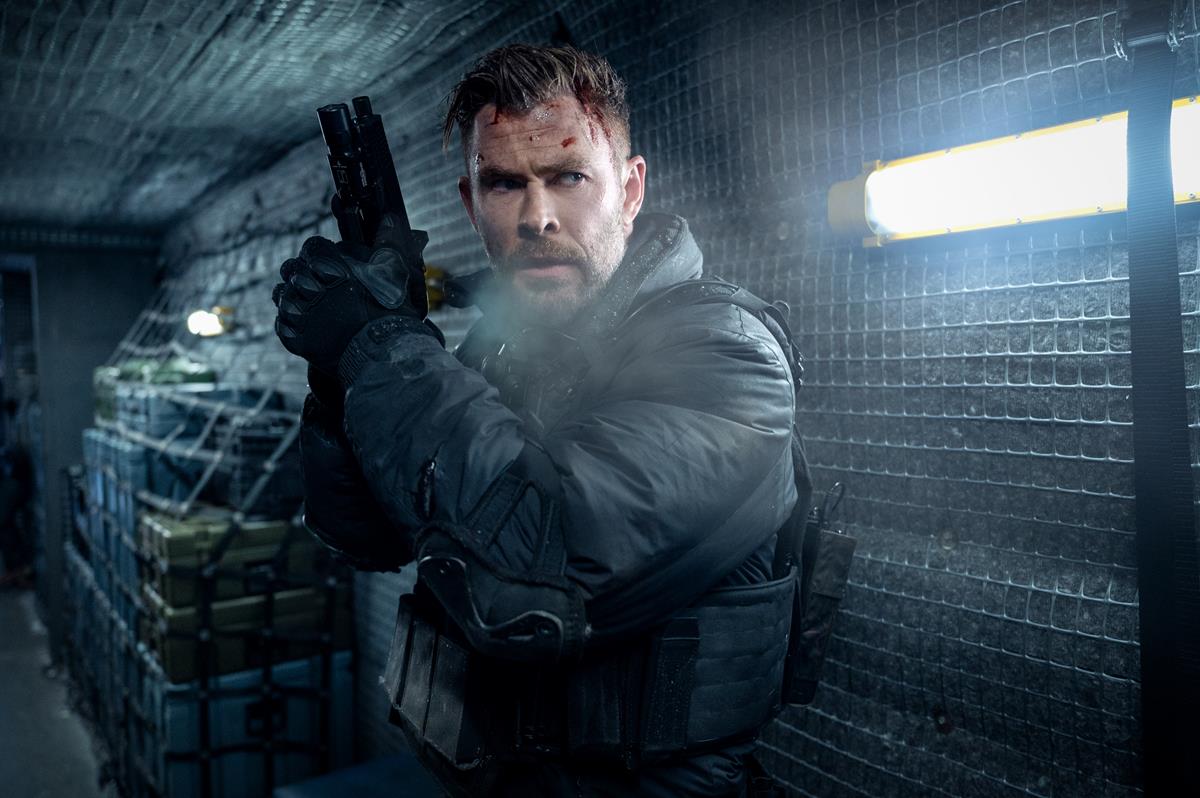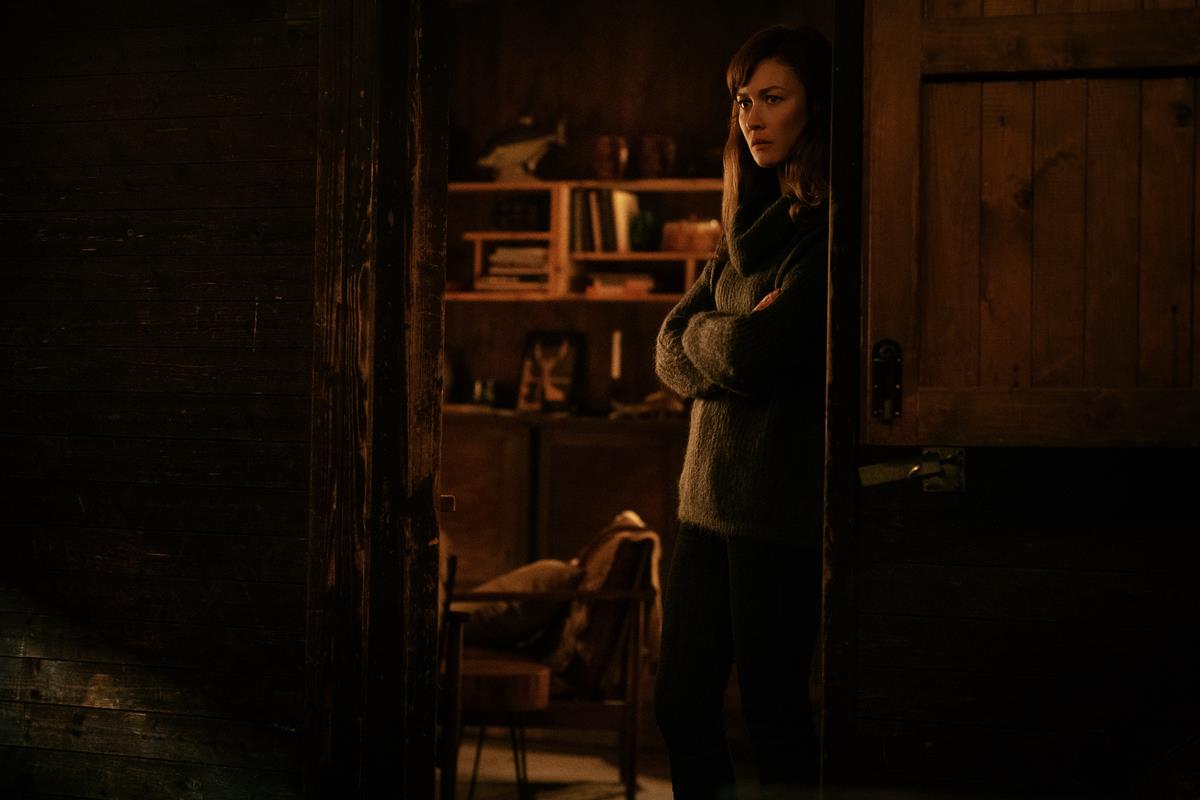From “Extraction 2,” courtesy of Netflix
TL;DR
- “Extraction 2” has proven itself as a worthy sequel to its original counterpart, with stuntman-turned-director Sam Hargrave delivering intensified action sequences.
- The Netflix action franchise film features an extraordinary 21-minute “oner” that includes a riotous prison break, a multi-explosion car chase in a forest, and a helicopter landing on a moving train.
- The movie relied heavily on a well-prepared stunt team, with sequences featuring more than 400 performers. The car chase through the forest alone involved over 260 vehicles, some of which were uniquely modified for shooting. The audacious helicopter and train stunt required a novel approach, with rehearsals conducted on a semi-truck before moving to the actual train.
If you’d like to improve and evolve your cinematography skills, join us for the Director of Photography Creativity Conference, held October 26 at NAB Show New York.
The action genre is currently working overtime, with healthy franchises and new ones emerging, including Netflix’s Extraction. The original 2020 film, directed by stuntman Sam Hargrave, had no right to expect a sequel even though they had hedged their bets with a scene at the end hinting at a continued narrative.
It was only after the original Extraction was produced and was audience testing that there was talk of a second movie and a possible franchise, as Hargrave told Brian Davids at The Hollywood Reporter. “When it was testing internally, we saw the desire of Netflix to have an action franchise in their stable. They were excited about the possibility and loved working with Chris [Hemsworth]. So we did three test screenings with audiences around town, and then they started to talk about a second movie internally.”
READ MORE: ‘Extraction 2’ Director Sam Hargrave Had to Redesign His 21-Minute Oner From Scratch (The Hollywood Reporter)
When a sequel was greenlit, Hargrave and his cast and crew achieved something unusual; they produced a film that was better than the original in almost every way and featured an impressive 21-minute “oner” in the middle.
One-take sequences are not unusual, but 21 minutes for pure fight-or-flight action are. Apart from the continuity demands, Extraction 2 needed months of preparation to make the three scenes work, including setting lead actor Chris Hemsworth on fire in the middle of a prison break, a multiple explosion car chase in a forest, and a helicopter on a moving train.
Hargrave summed up the prep work to Matt Fowler at IGN, “The rehearsal process (for the oner) was four or five months from conception to finding the locations,” he revealed, “mapping out the path and then getting the actors making all their moves.
“Then shooting took 29 days, I believe, to complete.”
READ MORE: How They Made That Insane 21-Minute One-Shot (IGN)
During early conversations with producer Joe Russo, the idea of a more extended sequence came up. Hargrave told Variety’s Jazz Tangcay, “Joe said, ‘It’d be cool if we opened the film with Tyler (Chris Hemsworth) extracting someone from prison. Joe, he wrote this into the script, ‘And thus follows the greatest oner in cinema history.’”
Hargrave devised a plan forward, resulting in a 21-minute one-take sequence that sees black ops specialist Tyler Rake entering a prison to rescue the family of a violent gang member. As Tyler and the family members escape the prison and jump into armored vehicles, a chase ensues, and when they board a train, it comes under attack by gangsters who land a helicopter on the train.
As a stunt coordinator, Hargrave had been involved with one-take action before. He had been an MCU stunt master and Captain America stunt double; he worked on Charlize Theron’s Atomic Blonde with its 10-minute oner fight scene. The first Extraction may had its own 12-minute one-take, but nothing as complex and lengthy as the second movie.
READ MORE: ‘Extraction 2’ Used 400 Extras to Pull Off That Insane 21-Minute One-Take Action Scene (Variety)
The movie drew on his experience tying all his disciplines together, including operating the camera with fellow operator Nate Perry. Hargrave explained to Polygon writer Brandon Streussnig how his stunt regimen was a bonus when he carried the camera.
Hargrave’s stunt past prepared him for scenes like the “oner” in Extraction 2 — most notably as a camera operator. Hargrave takes an almost Buster Keaton-esque approach toward creating these incredible feats of human achievement and shooting them personally.
“The real challenge, truthfully, for me, is that a lot of operators and camera people could do a better job than I did, but there’s a certain weight of responsibility because of where I want to put the camera,” he says. “Sometimes it’s in a pretty dangerous spot. For example, in the second movie, when we were landing a real helicopter on a moving train, I wanted the camera to walk underneath the helicopter as it landed and then wrap around and see it leave. That’s a fairly dangerous stunt to pull off. I was blown off the side of the train. Luckily, I had a harness and a cable on during rehearsal.
“Truthfully, the main reason I do many of those things is not because I’m a better operator, per se. It’s just that I feel more comfortable putting myself in harm’s way.”
READ MORE: How Extraction 2’s director personally saved the one-take action sequence (Polygon)
More details breaking down these three primary sequences come from Anna Menta at Decider. The prison break scene was filmed in two locations. The interior was filmed at Mladá Boleslav Jail in the Czech Republic, a former working prison now used exclusively for movie shoots, including Mission Impossible: Ghost Protocol. The exterior courtyard riot — the far more difficult portion of the scene — was filmed at an 18th-century grain storage facility.
The prison riot alone took more than four months of prep and featured upwards of 400 stunt performers and “special ability action extras,” some of whom were fighting Hemsworth in the foreground while others fought each other in the background.
“There were 75 stunt performers and a bunch of specialty backgrounds woven in there,” Hargrave told Menta. “That took three nights to do that exterior, that whole thing. I relied heavily on our amazing stunt team to choreograph the background fights. There are layers and layers and layers of stunts and background and extras.”
The car chase through the forest used many of the same techniques Hargrave used for the car chase in the first movie, but there were a lot more cars. The production rented over 150 vehicles and purchased 116 more modified for shooting, including SUVs modified to drive from the top and SUVs modified to drive from the rear. Co-stunt coordinator Noon Orsatti operated the SUV “driven” by Chris Hemsworth in the movie, while in reality, she was driving the car from the backseat.
Hargrave also wanted to up the stakes from the first film by bringing the camera in and out of the cars more often and getting closer to the actors during the chase.
Operating the camera was sometimes a matter of him offloading it to himself in a different shot, “In the car, for instance, it was like a contortionist ballet. I’m falling all over the place, hitting my head, and jamming my finger, but it all adds to the chaos of the sequence.”
As for the helicopter and moving train sequence, the team rehearsed the stunt by first landing the helicopter on a flatbed truck. “We started stationary with a semi-truck, and then the truck moving in a large open parking lot, and got to the speed we wanted to show that he could consistently do it. It took a couple of days,” Hargrave said. But beyond the pilot Fred North learning the stunt, Hargrave had to figure out how to film it.
“I was up on the top of the train, handheld, and as (the helicopter) came in, my biggest concern was not getting in the way of those moving blades,” the director said with a laugh. “I had to wait for the right moment, as he flares out, and then I ran towards it. It felt like running into a hurricane because the downdraft of that helicopter is powerful. So I have to run through that. I was as close as three feet, maybe four feet — I could reach out and touch Fred if I wanted to.”
Ultimately Hargrave’s philosophy on a successful oner is based on a different type of role playing. “A oner is more like a video game or an interactive play. Traditional cutting and coverage is traditional filmmaking, and that’s how it’s been done for a long time. So the idea of the oner is to follow a character through a scenario and experience it with that character in real-time,” he tells Menta.
“It’s its own version of forced perspective. Yes, the camera is looking where I want you to look. However, it feels more organic than putting the camera over here and then cutting over there and forcing the audience to see and feel something. The oner allows the audience to feel something during these action sequences, and it’s one way to differentiate yourself.
“I’ll never be able to out-kick, out-punch, and out-choreograph [Chad Stahelski or David Leitch] because they’re the best. So the best I can do is to offer a slightly different perspective on the action and say, “This is how I see it. This is how it’s fun for me to experience it.” And hopefully, audiences appreciate that when they watch it.”
READ MORE: ‘Extraction 2’ Director Breaks Down That 21-Minute, “One Take” Action Scene, From The 400-Person Prison Fight To Landing A Helicopter on a Train (Decider)
Polygon’s Streussnig, however, recognizes the stuntman-turned-director as a savior of sorts. “With innovators like Sam Hargrave running around, throwing themselves underneath helicopters to get the perfect shot, the oner has been rescued just as it was getting stale,” he writes. “He’s found a way to extract it, if you will, from thoughtless, CGI-laden exercises and propel it to explosive new heights. If Extraction 2 proves anything, not everyone can pull these sequences off — at least not in ways that feel like they’re worth the effort.”


